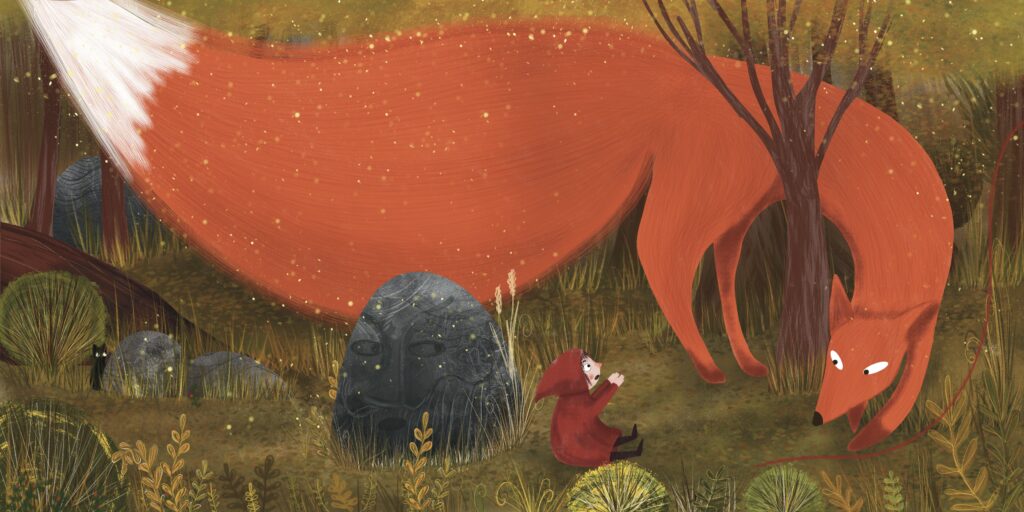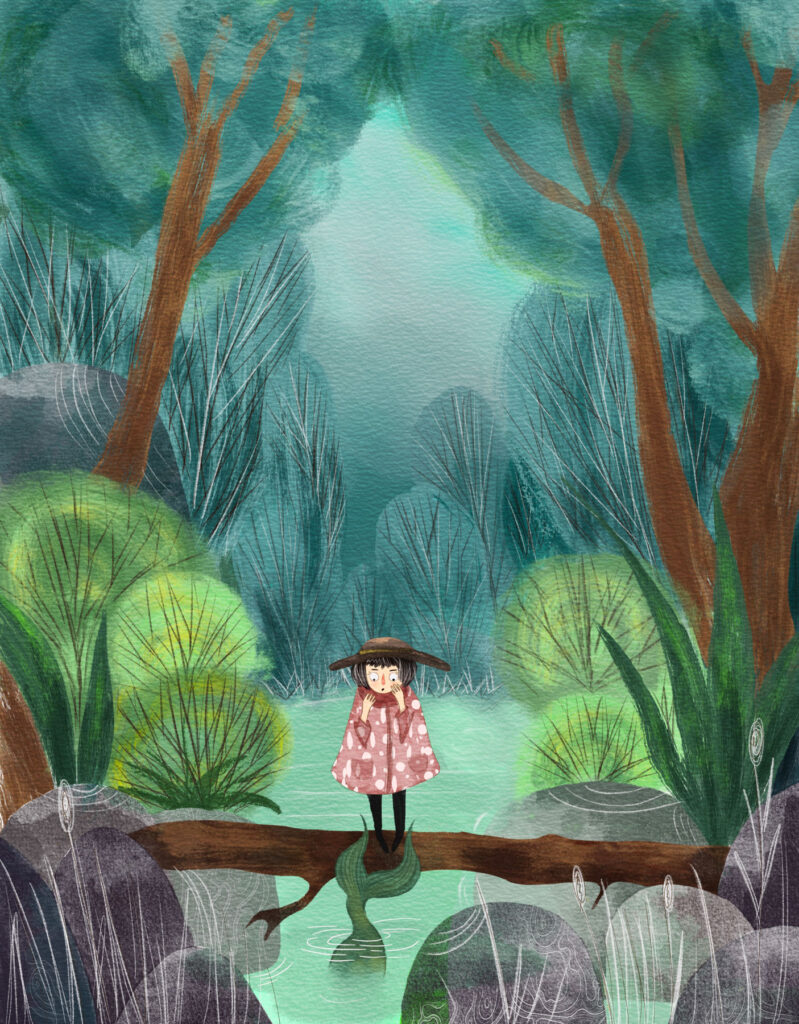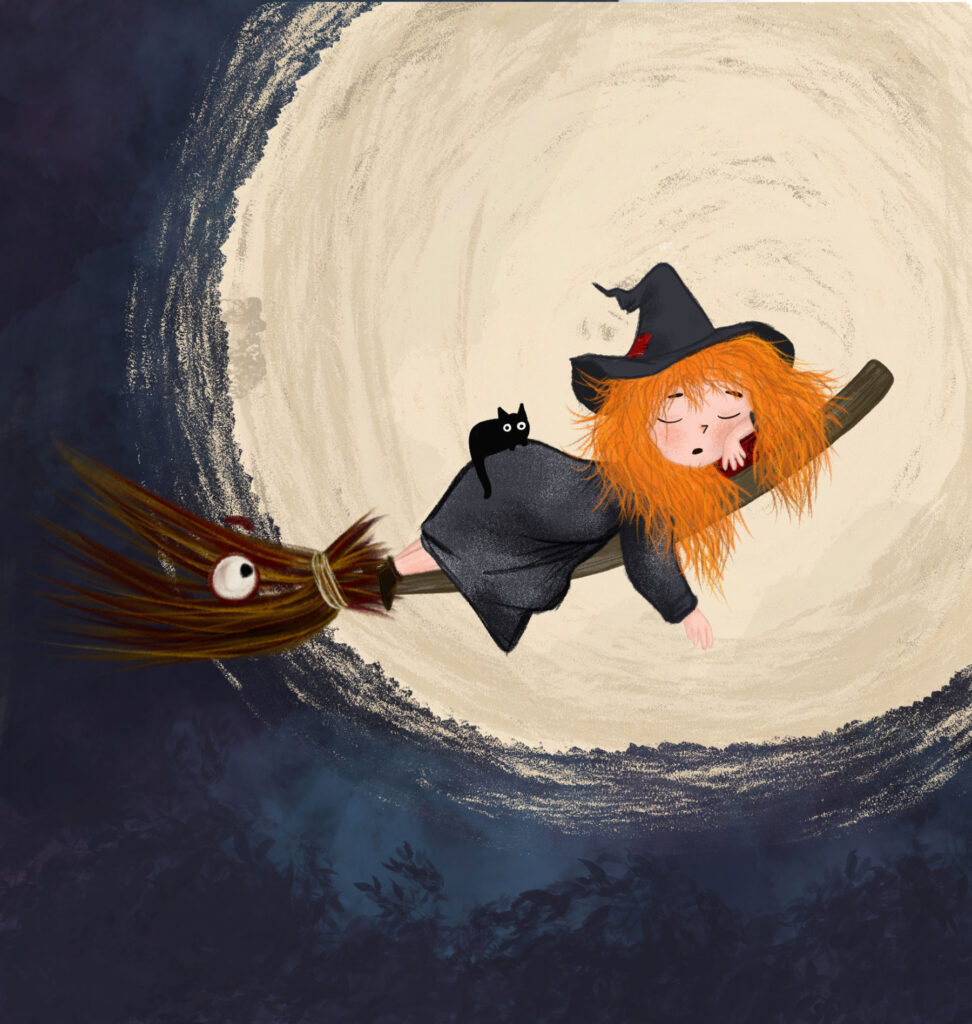Meet Iya Voinich, a talented children’s book illustrator with a captivating journey that blends artistry, psychology, and storytelling. From childhood dreams of animated films to navigating the complexities of the publishing world, Iya’s passion for creating enchanting visuals that resonate with young minds shines through in every stroke of her illustrations. Delving into the realm of emotions and psychology, her artwork not only captivates but also fosters a deeper connection with young readers, making her a trailblazer in the world of children’s literature. Join us as we explore Iya’s inspiring journey, creative process, and upcoming projects that promise to delight and inspire audiences of all ages.
What led you to incorporate your background in children’s psychology into your illustrations? How does this aspect influence your creative process?
Incorporating my background in children’s psychology into my illustrations stems from a deep
passion for understanding and connecting with the emotional world of children. It allows me to
create artwork that resonates on a psychological and emotional level, aiming to positively impact
young minds.
This aspect significantly influences my creative process by guiding my choice of themes, colors,
and expressions. Drawing from my knowledge in children’s psychology, I strive to craft visuals that
not only captivate but also engage with the developmental needs and emotions of the audience. It
adds a layer of intentionality to my work, fostering a more meaningful and enriching experience for
children through art.
Could you describe a significant challenge you faced in your journey as an illustrator? How did you overcome it, and what did you learn from the experience?
I think in my profession as an illustrator, there were two significant global challenges.
The first challenge came at the very beginning of my journey when I was looking at the works of
other talented and wonderful illustrators, feeling very unsure of myself. Starting to work was
intimidating; I felt I lacked experience, wouldn’t be able to, and had numerous small excuses. It
took a great deal of effort to overcome my fear, create a website, start sending out my portfolio, and
receive my first commissions.
The second challenge was more difficult. When the war started, it became initially challenging to
work with clients from Europe, and eventually, it became impossible. The number of orders
decreased. Moreover, there were refusals to print and collaborate from Russian publishers due to
my anti-war stance.
I made the decision to leave and start over. To try to begin anew.
More than a year, I have been living in Verona with my daughter, the dog and the cat.
I enrolled in the master’s program in publishing at the University of Verona. And I will have my
degree in April 2024. I chose this program because for over 15 years, I have been closely involved
with books and illustrations, and I was interested in studying the publishing process from the inside,
from the book layout to the reader.
What has been the most rewarding aspect of creating silence books to explore emotions
through visual art?
I guess the most rewarding aspect of creating silent books to explore emotions through visual art
lies in the unique ability of visual storytelling to evoke deep emotional responses without the need
for words. Through the power of imagery, these books have the potential to transcend language
barriers and connect with a diverse audience on a profound emotional level. The silent narrative
allows little readers to interpret and feel the emotions depicted in their own way, fostering a
personal and introspective experience.
How do you approach balancing the whimsical and imaginative elements of childhood with the deeper exploration of emotions in your illustrations?
I generate ideas with very rough, let’s say, sketches that are only understandable to me or the client
who has been working with me for a long time. I don’t like highly detailed sketches because during
the color process, I may change the composition on the fly, finding a better solution.
I usually print out the storyboard and assemble it into a book layout, as it becomes clearer about the
book’s concept, what needs refinement, and what needs to be changed. Of course, you can leave it
and view the storyboard on the screen, but I prefer holding the concept of the future book in my
hands. Along the way, I can make pencil notes and edits that I can later incorporate.
Once the concept is ready and approved, the color work begins. But again, I don’t just color already
perfect sketches; new details may emerge during the color process, small but adding accents to the
illustration.
I сreate a visual story that unfolds progressively, allowing for a gradual transition from
lighthearted, whimsical scenes to more emotionally charged moments. This approach engages the
viewer in an emotional journey. For this I use symbolic elements that capture the essence of
childhood, a vibrant and playful color palette for whimsical elements, and subtle, nuanced tones for
the exploration of deeper emotions, because colors can evoke specific feelings and contribute to the
overall emotional impact. Character expressions are also very important because kids usually
associate themselves with the heroes, can recognize their emotions, and here it is essential to be
crystal clear in conveying the character traits of the heroes. Certainly, children’s symbolism is
equally important. These elements from everyday life can serve as entry points for the viewer.

Ultimately, it is always a delicate balance between whimsical and real elements. It is a complex yet
captivating process, starting from rough sketches and progressing to a complete, harmonious
illustration.
Can you share a memorable moment or experience from your career as an illustrator that has
had a lasting impact on you?
One of the most memorable moments in my career was when my illustrations transcended the pages
of books and found a new canvas on clothing. This remarkable experience unfolded through a
collaboration with the esteemed brand Roma e Tosca. Witnessing my artwork not only grace the
pages of a book but also adorn a blouse was truly splendid.
The sheer excitement and awe of seeing my illustrations come to life in a tangible and wearable
form were indescribable. It marked a significant milestone in my artistic journey, as the
collaboration allowed my creations to reach a broader audience beyond the realm of literature.
The first time I laid eyes on my illustration adorning the blouse, a rush of exhilarating feelings
overwhelmed me. It was a fusion of pride, accomplishment, and sheer joy. The intricate details and
vibrant colors that I had meticulously crafted on paper now took on a new dimension, enhancing the
beauty of the garment. Witnessing someone wear my illustration was not only a testament to the
success of the collaboration but also a surreal and immensely rewarding moment for me as an artist.
The experience with Roma e Tosca not only expanded the horizons of my artistic endeavors but also
fueled my passion to explore diverse avenues for showcasing my illustrations. It was a reminder
that art has the power to transcend traditional boundaries and find expression in unexpected and
delightful ways. This collaboration remains etched in my memory as a testament to the limitless
possibilities that can unfold when creativity merges with the world of fashion.
What advice would you offer to aspiring illustrators, particularly those interested in creating
children’s books with a focus on emotions and psychology?
You should understand Your Audience.
Gain insights into the developmental stages and emotional needs of your target audience, which in
this case, are children. Understand the age group you are catering to, as emotions and psychological
aspects can vary significantly among different age ranges.
Read children book look at the illustrations of other illustrators, analyze how they convey complex
feelings through visuals, and learn from their techniques.
Create Diverse Characters:
Ensure diversity in your characters to reflect the richness of human experiences. Children from
various backgrounds should be able to identify with and find representation in your illustrations.
Find your own style:
Don’t afraid to experiment with different illustration styles to find what resonates best with the
emotional tone of your stories.
Don’t afraid to show your works and stay True to Your Voice:
While learning from others is essential, develop your unique voice and style as an illustrator. Stay
Inquisitive and Curious and may be a little bit childish.
Stay curious and open-minded. Children’s literature is dynamic, so try to be on the wave.

How do you maintain your creativity and inspiration, especially when faced with creative
blocks or challenges in your work?
When I faced with creative blocks I find solace in listening music as it has the power to evoke
emotions and spark new ideas. I like to take walks in nature to clear my mind and reconnect with
the natural world. I usually find some textures of the outdoors for using in future illustrations.
I love Libraries, I guess books often serves as a catalyst for generating fresh ideas and overcoming
creative stagnation.
For finding the character for my books I like watching people how they laugh, move drink coffee.
I always have my sketchbook with me to do some sketches for future.
Art galleries take a strong part in my way to maintain my creativity. I usually go there to absorb the
work of other artists and gain new insights. Exposure to different styles, techniques, and themes
broadens my artistic horizons and stimulates my own creative thinking.
In what ways do you think illustrations in children’s books contribute to the emotional development and understanding of young readers?
illustrations provide visual cues for emotions, allowing children to recognize and understand various
feelings depicted in the story. Through vibrant images, children learn to identify emotions such as
joy, sadness, fear, and empathy. illustrated characters experiencing different emotions help children develop empathy by putting themselves in the shoes of the characters.
Also complex emotional themes, such as loss, friendship, or resilience, can be simplified and made
more accessible through illustrations. Visual storytelling helps children grasp abstract concepts and
navigate their own emotions more effectively.
Illustrations convey emotions and cues beyond words, teaching children the nuances of nonverbal
communication. They learn to interpret facial expressions, body language, and visual context,
enhancing their communication skills.
Overall, I guess, illustrations in children’s books serve as powerful tools for emotional development,
promoting empathy, imagination, and understanding in young readers as they navigate the
complexities of the world around them.

Looking ahead, do you have any upcoming projects or goals that you’re particularly excited
about sharing with your audience?
I have a very exciting project in the works! It’s a funny book that follows the exciting adventures of
Vikings as they embark on thrilling journeys.
I’m currently working on creating the characters and illustrations for the book, and I must say, it’s
been an incredibly enjoyable process. Each character has its own unique personality, and I’m having
a great time bringing them to life on the pages.
I’m aiming to have the book ready for release in autumn, and I can’t wait to share it with my
audience.






